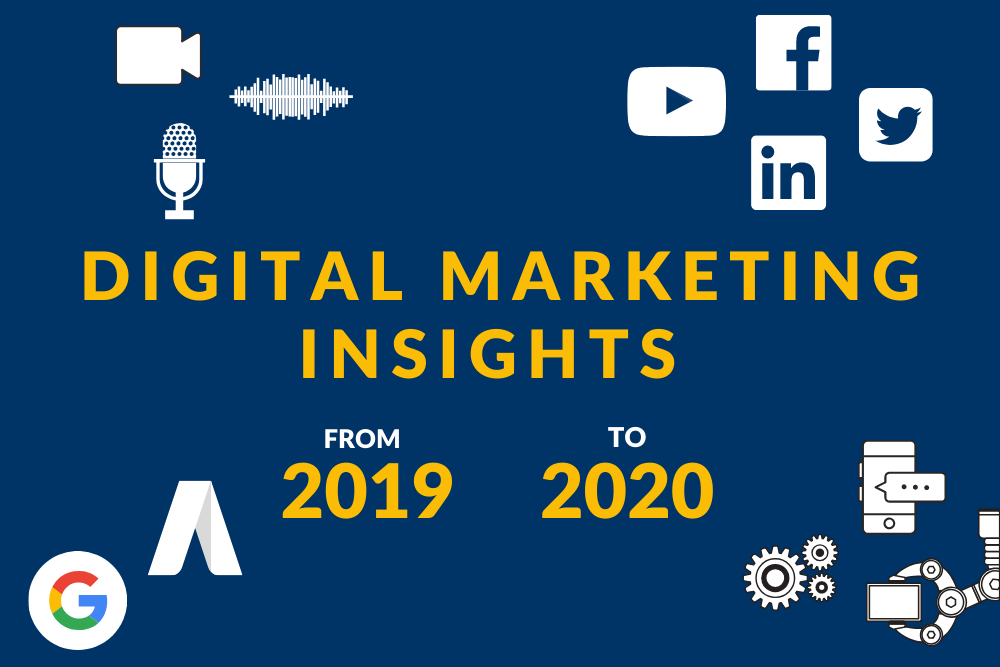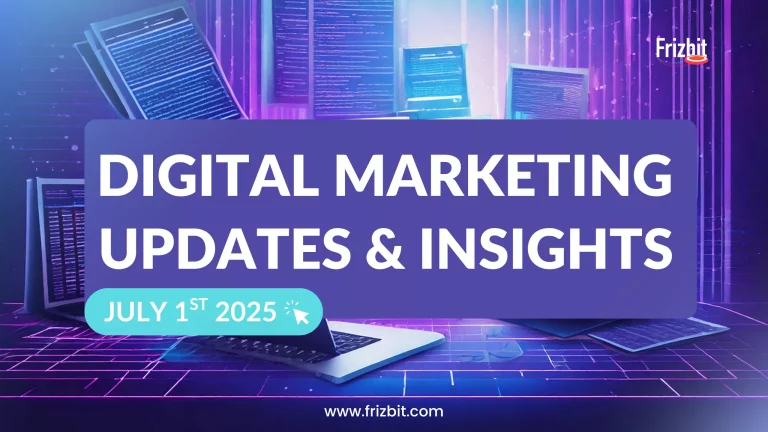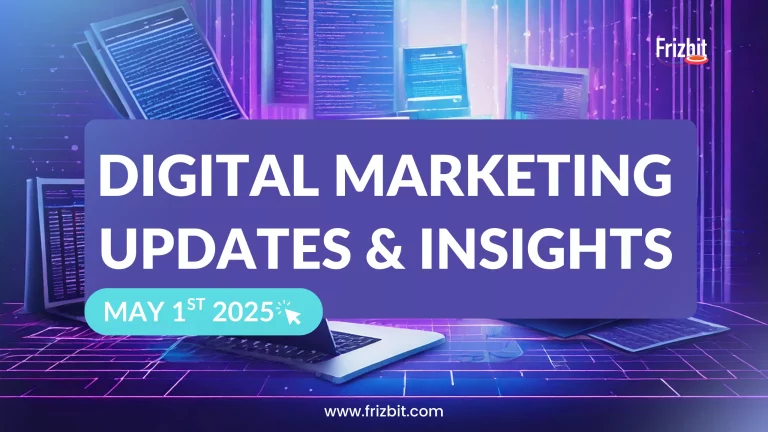2019 was a year full of new trends, events and updates within the digital marketing world. In this article, we are going to take a look at what happened in 2019 and what kind of insights you can use in 2020 for your advantage. We will do this based on the following topics:
- Search Marketing Updates of 2019
- Marketing Automation Updates of 2019
- Content Marketing Updates of 2019
- Social Media Marketing Updates of 2019
1. Search Marketing Updates of 2019
When it comes to search marketing, a bunch of things changed in 2019. Let’s first take a look at the Google algorithm updates, because they definitely had a big impact on search marketing in 2019.
Google Organic Updates of 2019
-
Google Search March update
The first update of 2019 was a big one. The update mainly affected YMYL (Your Money or Your Life) websites. Google started favoring websites that are more trustworthy, especially when people search for sensitive keywords.
-
Google Search June update
In this update, Google started showing video carousels a lot more. In 61% of the searches, a video carousel will show up now. Also some news sites got affected. Google raised the quality bar for news content.
-
Google Search September update
The last core update in 2019 was one that again gave more priority to video content. YouTube even overtook Wikipedia in the US Google Index. This means that video content is very important for your SEO.
-
The BERT algorithm
BERT is an open-sourced technique for natural language understanding. This update should improve the understanding of queries, especially the longer spoken or written queries.
These were the major updates that Google rolled out in 2019. The conclusion is that authoritativeness, expertise, and trustworthiness are the most important factors in your content to show to Google. And since the showing of video snippets have massively increased, video content is more important than ever.
Google Ads Updates of 2019
Pay-per-click advertising has changed digital marketing forever. In 2019, Google said that it has generated 32.6 billion in revenue from advertising, which is an increase of 16%. Google Ads is still increasing and that is why it is important to look at what happened with Google Adwords in 2019.
-
Removal of average position
Google removed the average position metric from Google Adwords because it does not tell the whole story. When you have the first position, it does not mean that you are shown at the top of the SERP. Organic searches could be on top of you for instance. So because of this Google decided to favour other metrics.
-
Evolution of phrase and broad matches
In 2019, Google announced that phrase match and broad match modifiers now also show to same-meaning variants like synonyms and paraphrases. This means that your keywords can show up for more queries, that have similar meanings. Google is saying it did this because the intent behind a query is more important than the semantics within a query.
-
New affinity audiences and in-market audiences
In October, Google added two brand new audiences: seasonal event segments for in-market audiences and affinity audiences. With in-market audiences you can now target your ads to exclusively users that actively search for products or services like yours. With affinity audiences, you can target people that have shown an interest in a particular topic.
-
Bumper ad creator
Lastly, Google introduced a bumper ad creator for everyone. Not every business has the resources to produce professional videos. So that is why you can now create a series of six-second Youtube Ads in a very easy way. Perfect if you do not have the resources to do this yourself.
These were the major updates that Google Adwords released in 2019. There are some other updates that we did not mention here. You can find a full list of the biggest updates in Google Ads on Google Ads Announcements.
2. Marketing Automation Updates of 2019
Marketing Automation has been becoming increasingly popular over the last few years, and as of now, on average 51% of the companies are using Marketing Automation according to Email Monday. CMOs are allocating one third of their budget in marketing technology. Also, according to Salesforce, the fastest increasing tech solutions are Artificial Intelligence (+155%) and Marketing Automation (+104%).
-
Multi-Channel Automation Platforms
What is becoming more interesting now are Multi-Channel Automation platforms. These platforms offer the ability to create and execute contextual marketing campaigns in multi-channel and they are hyper-personalized for each user. Companies that use omnichannel strategies achieve 91% greater year-over-year customer retention rates than a business that does not use it.
But how do you create an omnichannel experience for your customers? There are popular multi-channel platforms such as Salesforce, Infusionsoft, Hubspot for B2B and Frizbit for Marketing Automation for e-commerce. These would help you engage with your customers in multi-channel.
-
Web Push Notifications
One of the other things that got hold of the marketing automation world is web push notifications. Through web push notifications, you can send personalised notifications to your customers on almost any web browsers like Chrome, Firefox, Safari and Microsoft Edge. This channel is very effective and profitable, because you can send messages even if the users are not on your website and bring them back. Some platforms such as Frizbit embedded it to their automation platforms so that you can use it as a retargeting channel. So you can trigger push notifications based on user behaviour and run personalised campaigns, in cart abandonment or form abandonment.
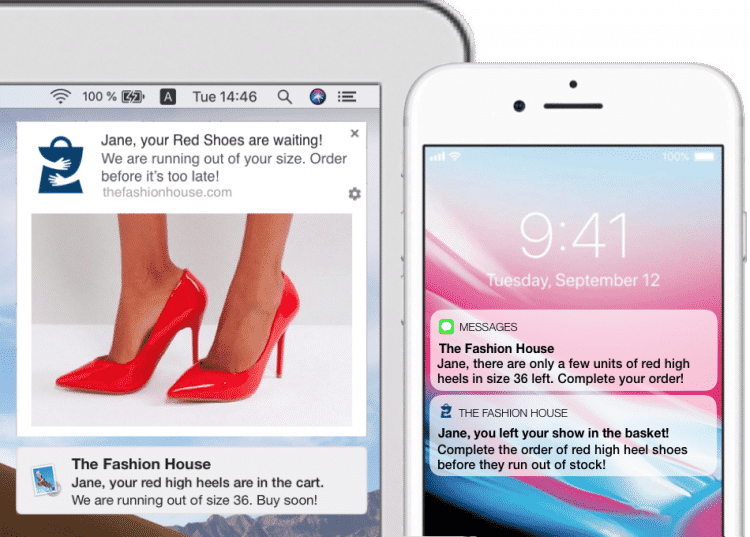
-
Chatbots
In 2019, the usage of Chatbots has increased even more. Chatbots have also become more AI-driven, capable of handling complex human interaction with ease and are now taking over traditional conversational services.
Most companies prefer in-built chatbots on their websites as they facilitate enterprises in providing instant customer interaction. For instance, Slack and Twitter messaging platforms are preferred by majority businesses.
Messaging platforms like Facebook Messenger have had huge success with Chatbots since opening up integration for brands. Over 60 percent of users who received a chatbot ping on Messenger engaged with the message.
WhatsApp Business allows brands to integrate chatbots with their API, opening up a whole new avenue for brand-user engagement. With 1.3 billion active MAU’s, this is a tremendous opportunity for businesses big and small.
The use of chatbots in business will evolve in the coming years – the design and architecture inevitably improving. So watch this space and keep a close eye on what happens through 2020 if you have designs on having your own chatbot in the near future.
-
Machine learning, AI and Hyper Personalisation
You are probably seeing it everywhere, Machine learning and AI. At the moment, it is the new world the marketers will benefit in many areas from hyper-personalisation of messages to bid optimisation or from content creation to product recommendation. We will have smarter marketing platforms, which yield more returns and profitability. Now many tools have started implementing but we will have to wait a bit for a perfect solution for smaller to medium size brands.
When it comes to Artificial Intelligence (AI), it is a perfect way to hyper-personalize your message to customers. But there are also companies like Amazon, that use AI, to recommend products to their users that are most likely to appeal to them. AI is very promising so you should follow this development carefully so you can be among the first ones that use this technology to their advantage.
3. Content Marketing Updates of 2019
Content Marketing offers a tremendous opportunity for businesses to boost their results. You should do this by delivering valuable and relevant content to users. This can improve your online reputation, build a community and grow supporters of your brand. In 2019, a number of changes evolved.
-
Video content
You are probably seeing it everywhere, video content. That is not surprising, because video is a highly engaging format for content. According to Forbes, 88% of the average user will spend more time on a website with a video than one without. And Hubspot is saying that 54% of consumers want more video content from a brand or business they support. So if you are not using video content in your content strategy yet, start using it now.
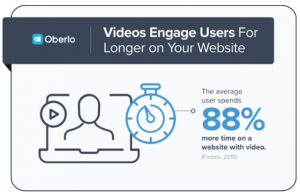
-
Podcasts
Podcasting has massively increased in popularity in the last decade. The amount of listeners has tripled in the last decade and it is expected to grow even more in the coming years. It is important though to not just start a podcast, but have an idea about what your goal is. Approach it as you do for the rest of your content efforts.
-
Content for voice
With the big increase of voice assistant usage like Alexa and Siri, the way people search changes a lot. While before, people would search for, ‘time China’, people now with the usage of voice recording search for ‘what time is it in China?’. This means that it is important for content marketers to start adapting their content creation for voice searches.
-
The state of content marketing
Backlinko analysed 912 million blog posts to understand the state of content marketing. This is what they found:
- Content marketing costs 62% less than traditional marketing
- Long-form content got an average of 77.2% more links than short articles.
- Question headlines got 23.3% more social shares than headlines that don’t end with a question mark.
- “Why” and “what” posts, as well as infographics, received 25.8% more links compared to videos and “How-to” posts.
4. Social Media Marketing Updates in 2019
In 2019, a lot changed on social media. Facebook had a massive redesign, Instagram got a new scheduling tool and LinkedIn expanded options for freelancers.
-
Facebook
As reported by Pocket-Lint Facebook got a massive redesign, described it as a much cleaner, with more of an all-white look. It also has a dark mode now too.
This redesign is supposed to put an emphasis on Groups and Events, which have become two of the biggest reasons people visit Facebook on a daily basis. The means the News Feed is featured less, which is probably good news for users overall.
-
Instagram
Instagram got a little less Insta with the new scheduling tool. You can now schedule feed posts and IGTV videos through Facebook’s Creative Studio. This new feature supports single and multiple photos along with videos. And you have the option to share it to your Facebook page as well. Once your copy and media assets are set, use the calendar to schedule the post. Hopefully the ability to schedule Instagram Stories is right around the corner.
-
LinkedIn
LinkedIn has expanded options for freelancers who use the platform. Now you can “find an expert” post option. To create a new “find an expert” post, you would go to post an update like normal, select the “find an expert” option, and then answer a few brief questions about the services and skills you’re looking for. This will help freelancers decide if they’re right for the job and if they should reach out in hopes of cutting down search time. “Find an expert” posts also stand out a bit more on your feed to draw extra attention.
-
Best Time To Post
During 2019, Sprout Social updated their best-times-to-post study. This is what it showed:
- Instagram: highest engagement on Wednesday and Friday between 10:00 a.m. and 11:00 a.m.
- Facebook: highest engagement on Wednesday from 11:00 a.m. to 1:00 p.m.
- Twitter: the best days to post are Tuesday and Wednesday.
- LinkedIn: highest engagement on Wednesday between 9:00 a.m. and 10:00 a.m.
These were the things that happened in Digital Marketing in 2019. We also published a blog about what the marketing trends in 2020 will be. Check it out here.
